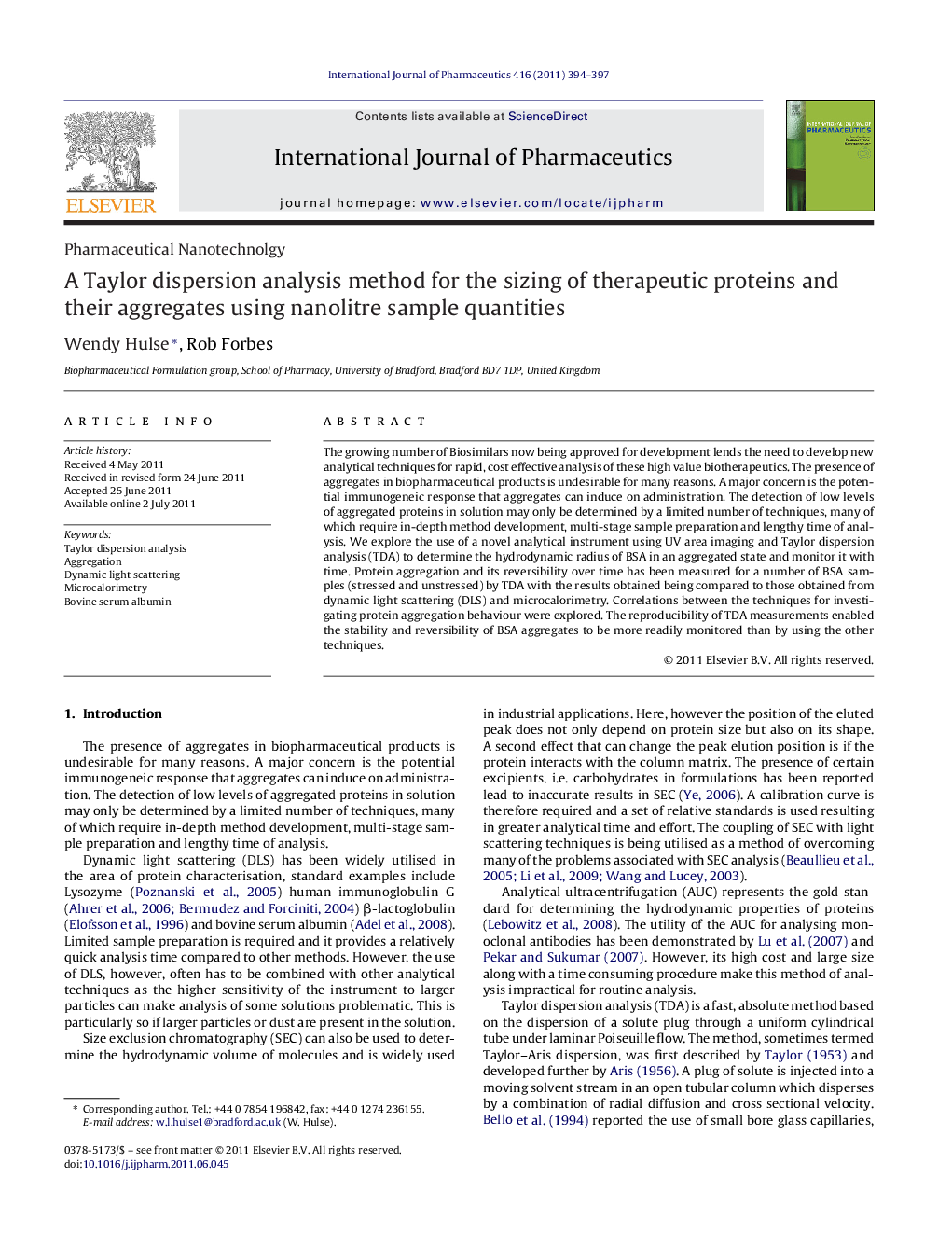| Article ID | Journal | Published Year | Pages | File Type |
|---|---|---|---|---|
| 2503502 | International Journal of Pharmaceutics | 2011 | 4 Pages |
The growing number of Biosimilars now being approved for development lends the need to develop new analytical techniques for rapid, cost effective analysis of these high value biotherapeutics. The presence of aggregates in biopharmaceutical products is undesirable for many reasons. A major concern is the potential immunogeneic response that aggregates can induce on administration. The detection of low levels of aggregated proteins in solution may only be determined by a limited number of techniques, many of which require in-depth method development, multi-stage sample preparation and lengthy time of analysis. We explore the use of a novel analytical instrument using UV area imaging and Taylor dispersion analysis (TDA) to determine the hydrodynamic radius of BSA in an aggregated state and monitor it with time. Protein aggregation and its reversibility over time has been measured for a number of BSA samples (stressed and unstressed) by TDA with the results obtained being compared to those obtained from dynamic light scattering (DLS) and microcalorimetry. Correlations between the techniques for investigating protein aggregation behaviour were explored. The reproducibility of TDA measurements enabled the stability and reversibility of BSA aggregates to be more readily monitored than by using the other techniques.
Graphical abstractFigure optionsDownload full-size imageDownload as PowerPoint slide
